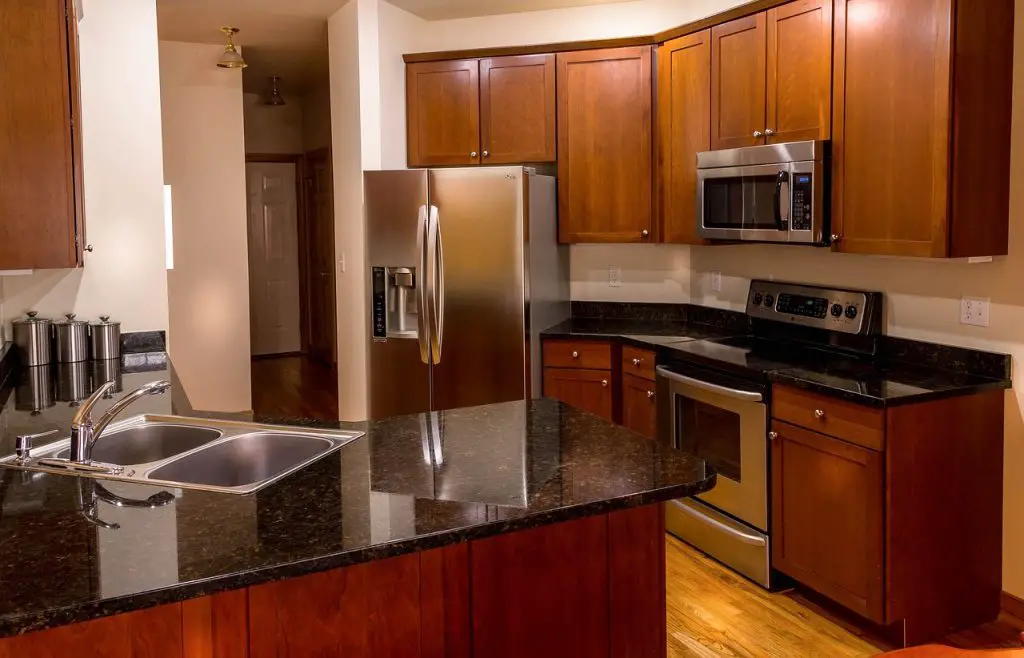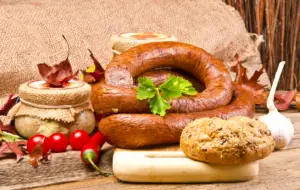Cleaning wood kitchen cabinets is an essential part of maintaining a kitchen’s appearance and hygiene. Over time, cabinets can accumulate a mixture of dust, grease, and other cooking residues that can make them look dull and grimy. However, with the right approach, you can keep your wood kitchen cabinets looking as good as new. Here’s a step-by-step guide on how to clean wood kitchen cabinets effectively:
Gather Your Supplies
Before you start, make sure you have the following items on hand:
Soft cloths or microfiber towels
Mild dish soap
Warm water
White vinegar (optional)
Baking soda (for tough stains)
Wood polish or oil (specific to your cabinet’s finish)
Dust the Cabinets
Begin by dusting the cabinets to remove any surface dirt and particles. Use a soft cloth or a duster to gently wipe down all surfaces, including the tops of the cabinets, doors, and handles. This will prevent scratching the wood when you start the wet cleaning process.
Make a Cleaning Solution
For general cleaning, mix a few drops of mild dish soap with warm water. If your cabinets are particularly greasy, you can add a cup of white vinegar to the solution for extra grease-cutting power. Vinegar is a natural degreaser and can help in removing stubborn grime without damaging the wood.
Wipe Down the Cabinets
Dip a soft cloth into the cleaning solution, wring it out so it’s damp but not dripping, and gently wipe the cabinet surfaces. Start from the top and work your way down to prevent drips. For detailed areas or intricate designs, use an old toothbrush dipped in the solution to scrub gently.
Tackle Tough Stains
If you encounter tough stains or built-up grease, make a paste of baking soda and water. Apply this paste directly to the stained area, let it sit for a few minutes, then gently scrub with a soft cloth or sponge. Baking soda is a mild abrasive that can help remove stubborn stains without scratching the wood surface.
Rinse and Dry
After cleaning, it’s important to remove any soap residue. Wipe the cabinets with a clean, damp cloth to rinse, then immediately follow with a dry cloth to prevent any water damage to the wood. Ensure all surfaces are thoroughly dried.
Polish or Oil
To restore shine and protect the wood, apply a small amount of wood polish or oil that is appropriate for your cabinet’s finish. Follow the product’s instructions carefully. This step will help in keeping the wood moisturized and prevent it from looking dull.
Regular Maintenance
To keep your wood kitchen cabinets looking their best, incorporate these cleaning steps into your regular cleaning routine. Wiping down the cabinets with a soft, damp cloth weekly can prevent build-up and make deeper cleaning sessions less necessary.
Cleaning wood kitchen cabinets doesn’t have to be a daunting task. With the right supplies and techniques, you can easily maintain their beauty and integrity for years to come. Regular, gentle cleaning will prevent build-up and ensure that your kitchen remains a welcoming, hygienic space for cooking and gathering.
Addressing the Hardware
While focusing on the wood surfaces, don’t overlook the hardware. Cabinet handles, knobs, and hinges can also accumulate grease and dirt, affecting the overall appearance of your cabinets. Remove the hardware from the cabinets if possible and soak them in a soapy water solution for a few minutes. Use a soft brush to scrub any intricate designs or tough grime. Rinse thoroughly and dry before reattaching to the cabinets. This step will not only contribute to the cleanliness but also to the smooth operation of handles and hinges.
Protecting Your Cabinets
In addition to regular cleaning, there are preventive measures you can take to keep your wood kitchen cabinets in top condition. Use liners on shelves and in drawers to catch spills and crumbs, making them easier to clean. Be mindful of the humidity levels in your kitchen since too much moisture can damage wood over time. Installing a dehumidifier or ensuring proper ventilation can help protect your cabinets from warping or swelling.
Dealing with Scratches and Nicks
Over time, wood cabinets might get scratched or nicked. For small scratches, a touch-up marker or crayon designed for wood can easily disguise the damage. For deeper scratches or nicks, you may need to fill them with wood filler and then paint or stain the area to match the surrounding wood. Always test these products in an inconspicuous area first to ensure the color match is satisfactory.
Consulting Manufacturer’s Recommendations
If your cabinets have a specific finish or are made of a unique type of wood, consult the manufacturer’s care recommendations. Some finishes may require specific cleaners or methods to avoid damage. Following the manufacturer’s guidelines will ensure you’re using the safest and most effective cleaning methods for your specific cabinets.
Avoiding Harsh Chemicals
It’s important to avoid using harsh chemicals or abrasive cleaners on wood cabinets. These can strip the finish, damage the wood, and lead to costly repairs or refinishing jobs. Always opt for the gentlest cleaning solutions possible and test any new cleaner on a small, hidden area of the cabinet to check for any adverse reactions.
Maintaining the beauty and functionality of wood kitchen cabinets requires a combination of regular cleaning, attentive care, and preventive measures. By incorporating these practices into your household routine, you can ensure that your cabinets remain a cherished feature of your kitchen for years to come. Remember, the key to preserving wood cabinets is not just in the cleaning but also in the ongoing care and protection against wear and tear.
Frequently Asked Questions About Cleaning Wood Kitchen Cabinets
Can I use olive oil to polish my wood kitchen cabinets?
While olive oil can temporarily enhance the appearance of wood cabinets, it’s not recommended for long-term use because it can turn rancid and attract dust and dirt. Instead, use products specifically designed for wood care, such as beeswax polish or commercial wood polish that won’t spoil over time.
How often should I deep clean my wood kitchen cabinets?
The frequency of deep cleaning depends on the level of kitchen activity. For most homes, a thorough cleaning every 3 to 6 months is sufficient. However, if your kitchen sees a lot of use or if you cook frequently with oils and grease, you might need to clean them more often.
Can I use vinegar to clean wood cabinets if they have a natural finish?
Vinegar is a mild acid and can be used on many finished wood surfaces for cleaning; however, it’s always best to test it on a small, inconspicuous area first. For natural finishes, dilute the vinegar with water and use sparingly to avoid damaging the wood.
What should I do if my cabinets start to look dull or discolored?
Dullness or discoloration can often be addressed by cleaning and then applying a new coat of polish or finish. If the discoloration persists, it may be a sign of sun damage or aging, in which case refinishing or repainting might be necessary.
How can I remove sticky residue from kitchen cabinets without damaging the wood?
To remove sticky residue, make a paste of baking soda and water, and apply it gently to the area. After a few minutes, wipe it off with a damp cloth and dry thoroughly. For more stubborn residue, a solution of dish soap and water can be used, followed by a rinse with a clean damp cloth.
Is it necessary to remove the contents of my cabinets before cleaning them?
While it’s not always necessary to remove everything, it’s a good idea to clear out your cabinets periodically for a thorough cleaning. This allows you to reach every nook and cranny and also gives you a chance to declutter and organize your kitchen items.
How can I prevent water damage on my wood kitchen cabinets?
To prevent water damage, avoid hanging damp towels over cabinet doors and wipe up spills immediately. Use exhaust fans to manage humidity and avoid using excessive water when cleaning. Applying a silicone-free cabinet wax can also provide a protective barrier.
Can steam cleaning be used on wood kitchen cabinets?
Steam cleaning is not recommended for wood cabinets because the moisture can penetrate the wood and cause damage, such as warping or discoloration. Stick to damp cloths and mild cleaning solutions for the safest results.
What is the best way to maintain the hardware on my cabinets?
Regularly clean the hardware with a mild soap and water solution, dry thoroughly, and tighten any loose screws. For tarnished hardware, a metal cleaner appropriate for the type of metal can be used, but always test on a small area first.
How do I know if my cabinets need to be refinished or replaced?
If your cabinets are structurally sound but have surface damage, refinishing is a cost-effective way to restore their appearance. However, if the cabinets have significant damage, such as warping, mold, or broken frames, replacement might be the better option. Consulting with a professional can help you make the best decision based on your specific situation.
By addressing these common questions, you can ensure that your wood kitchen cabinets are not only clean but also well-maintained and protected against future damage.




